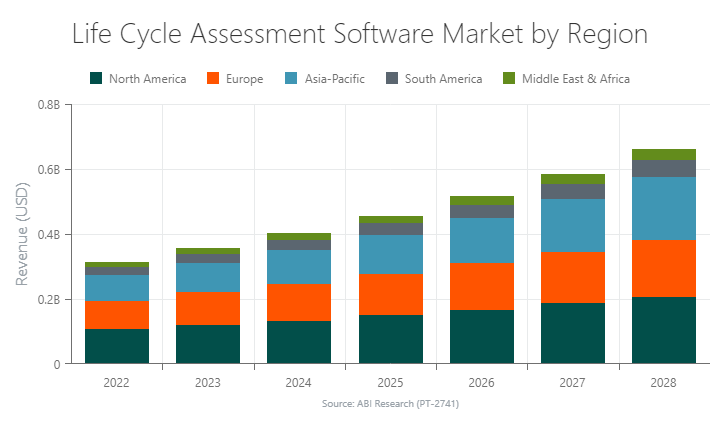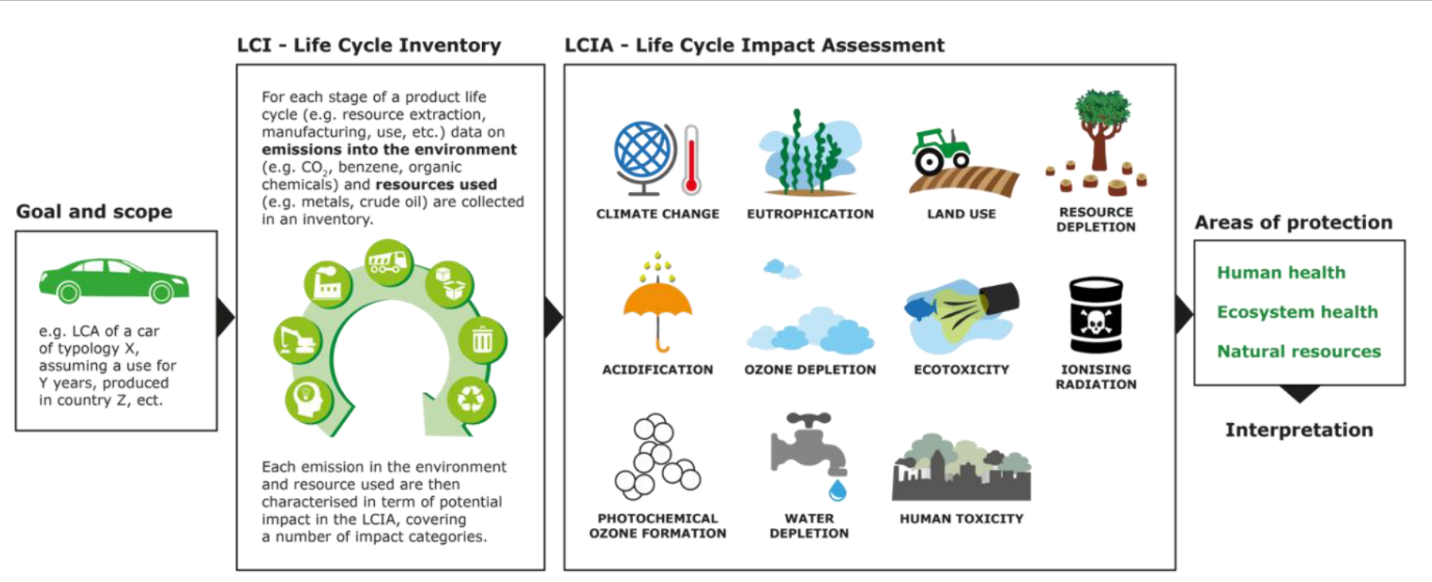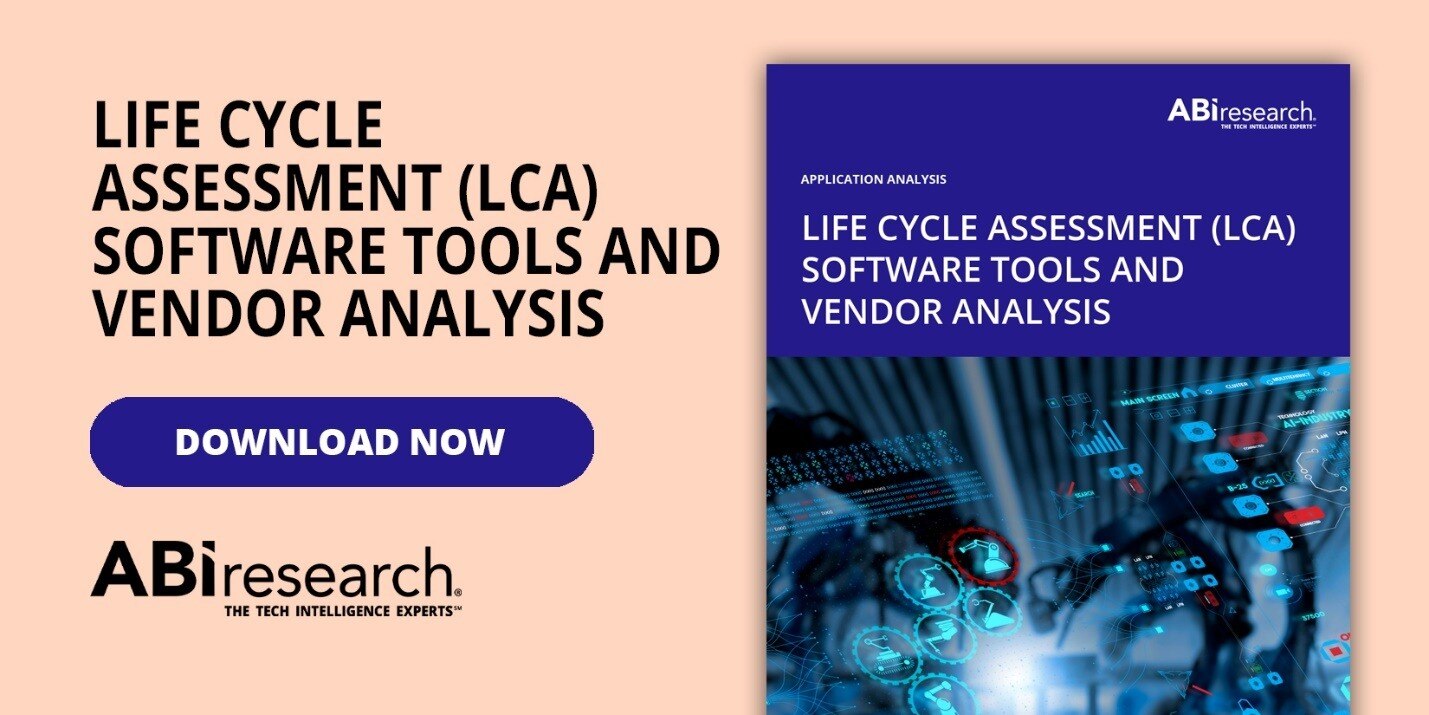It’s no secret that sustainability weighs heavily on the minds of corporate executives in virtually every industry. A recent Honeywell survey found that more than 4 in 5 companies plan to increase their budgets for environmental sustainability. There is external pressure to “go green” from eco-conscious consumers, trend-watching investors, and governments developing carbon tracking regulations. There is also internal pressure to reduce operational costs (e.g., energy consumption, packaging, etc.). One of the most effective ways to reach these sustainability goals is to use Life Cycle Assessment (LCA) software to analyze the environmental impact of a product, good, or service.
Whether it’s a payment card issued by a bank or a 5G network provided by a telco operator, every purchased good and service carries a carbon footprint. These environmental impacts can stem from a product's material extraction, manufacturing, transportation, use, and waste disposal. An LCA collects various environmental data, thereby putting a number behind a specific product’s footprint. Above all, the life cycle analysis will identify where emissions are highest throughout the product life cycle so issues can be solved.
As Chart 1 depicts, ABI Research expects the LCA software market to grow at a Compound Annual Growth Rate (CAGR) of 13.15% between 2022 and 2028. As companies increasingly react to the demand for sustainable products, the LCA market will increase its value from US$314.59 million in 2022 to more than US$660 million in 2028.

What Is a Life Cycle Assessment?
Simply put, a Lifecycle Assessment (LCA) is a tool companies use to assess the environmental impact of each phase of a product, good, or service’s life cycle. An LCA will evaluate material sources, transportation emissions, waste management, water/energy usage, and other factors affecting a firm’s sustainability goals. In a world where consumers and government regulations increasingly demand environmental accountability, LCA software is a key technology for organizations.
LCAs provide the following outcomes:
- Sustainability reporting
- Carbon footprint analysis
- Water footprint analysis
- Product design
- Generating Environmental Product Declarations (EPDs)
- Determining product key performance indicators
- Using data for cost estimations and eco-design decisions
From “Cradle to Grave”: The Four Stages of a Life Cycle Assessment
As stated by ISO 14040, four main stages of an LCA track a product’s environmental impact from “cradle to grave.”
- Goal and Scope: Define the reasons for conducting a life cycle assessment and which methodologies will be used for it.
- Life Cycle Inventory (LCI): In this stage of the LCA, various data (e.g., energy, Greenhouse Gas (GHG) emissions, materials, waste, etc..) are collected.
- Life Cycle Impact Assessment (LCIA): The data collected in stage 2 numerically quantify an organization’s environmental impact at each lifecycle stage.
- Interpretation: For the final stage of the LCA analysis, an organization identifies areas of concern regarding sustainability and evaluates the integrity of the assessment. Moreover, organizations draw conclusions, identify limitations, and provide recommendations for carbon offsetting.
Figure 1: Four Stages of a Life Cycle Assessment

(Source: European Platform on LCA (EPLCA)
Benefits of an LCA
This section lists the most significant benefits of using an LCA for your organization.
- Discover “Hotspots”: Pinpoint which life cycle stages of a product generate significant carbon footprint, thereby allowing you to proactively address issues.
- Increase Efficiency: Identifying areas for improvement allows you to improve the efficiency of energy, materials, and water use.
- Realize Economic Gains: Understand where costs are high during a product’s life cycle by performing Life Cycle Costing (LCC). As a result, organizations can save money by eliminating outdated/inefficient processes and technologies.
- Regulatory Compliance: LCA allows firms to adhere to mandatory environmental data disclosures, which are increasingly common worldwide. This helps ensure a “green” product is actually green.
- Brand Differentiation: A recent survey from PDI Technologies revealed that 66% of U.S. consumers would pay more for sustainable products even if a competitor offered a cheaper, non-sustainable alternative. Many of today’s consumers want companies to address climate change, making it essential to accurately assess carbon emissions. An LCA allows businesses to meet this growing demand due to the transparency it provides.
- Improve Product Reporting: LCA software saves time and promotes closer collaboration between key stakeholders by automating the reporting/interpretation of environmental data.
Related Content: As the EU Mandates Digital Product Passports, Here’s What Supply Chain Leaders Should Know
LCA Examples
LCAs are most often used in industries involving physical products, such as consumer packaged goods, electronics, and automotive. Below are examples of popular brands using LCA solutions to measure climate impact.
P&G
LCA is a key piece to Procter & Gamble (P&G) reaching its goal of being carbon neutral by 2040. Using LCAs helped P&G increase its use of recycled plastic in its product packaging by 32% within a fiscal year. Another example of the company using a life cycle assessment comes from its Dawn Powerwash product. By conducting an LCA of the product, P&G redesigned the product to ensure it uses ingredients that don’t require any soaking, pre-rinse, or re-rinses. In turn, customers could clean dishes with 50% less water.
Samsung
Samsung has been very active in LCAs since 2019, using them for its eco-conscious product portfolio. A life cycle assessment was established in January 2023 on the carbon product footprint of its entire semiconductor business. This allows Samsung to measure its carbon footprint when testing, manufacturing, and assembling chips at its facilities in South Korea, China, and the United States.
Ford
LCA adoption is gaining traction in the automotive industry as these manufacturers aim to reduce their climate impact. For example, Ford supports a circular design by leveraging LCAt software. The company uses an LCA to identify which parts of a vehicle design can use recycled or renewable materials. It’s been reported that over 85% of Ford vehicles in the European Union (EU) are recyclable. LCA tools have also benefited Ford by helping incorporate plant-based materials in vehicle design and comply with new EU regulations on Electric Vehicle (EV) batteries and Carbon Dioxide (CO2) fleet requirements.
Key Considerations
A number of technology vendors are providing software to support the life cycle assessment efforts of organizations worldwide, such as Makersite, Sphera, PRé SimaPro, iPoint, Once Click LCA, openLCA, Echochain, and Sustainable Minds. As companies continue adopting LCA to curb their carbon footprint, here are some key considerations when it comes to choosing the best platform:
- Goals and objectives
- Level of required LCA experience
- Subscription costs/licensing payments
- Lifecycle data availability
- Onboarding training and support
- Vendor reputation
To learn more about these considerations and the market for LCA solutions, download ABI Research’s Life Cycle Assessment (LCA) Software Tools and Vendor Analysis report. This content is part of the company’s Circularity Technologies & Programs and Sustainability Software Markets research services.


